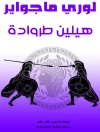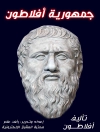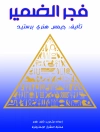In recent years, scholars have emphasized the need for more holistic subsistence analyses, and collaborative publications towards this endeavor have become more numerous in the literature. However, there are relatively few attempts to qualitatively integrate zooarchaeological (animal) and paleoethnobotanical (plant) data, and even fewer attempts to quantitatively integrate these two types of subsistence evidence. Given the vastly different methods used in recovering and quantifying these data, not to mention their different preservational histories, it is no wonder that so few have undertaken this problem.
Integrating Zooarchaeology and Paleoethnobotany takes the lead in tackling this important issue by addressing the methodological limitations of data integration, proposing new methods and innovative ways of using established methods, and highlighting case studies that successfully employ these methods to shed new light on ancient foodways. The volume challenges the perception that plant and animal foodways are distinct and contends that the separation of the analysis of archaeological plant and animal remains sets up a false dichotomy between these portions of the diet. In advocating qualitative and quantitative data integration, the volume establishes a clear set of methods for (1) determining the suitability of data integration in any particular case, and (2) carrying out an integrated qualitative or quantitative approach.
表中的内容
Issues and Methods for Integrating Data.- Methodological Issues in Zooarchaeology.- Methodological Issues in Paleoethnobotany: A consideration of Issues, Methods, and Cases.- Simple Measures for Integrating Plant and Animal Remains.- Correspondence Analysis and Principal Components Analysis as Methods for Integrating Archaeological Plant and Animal Remains.- Case Studies.- Microbotanical and Macrobotanical Evidence of Plant Use and the Transition to Agriculture in Panama.- Waitui Kei Vanua: Interpreting Sea- and Land-Based Foodways in Fiji.- Integrated Contextual Approaches to Understanding Past Activities Using Plant and Animal Remains from Kala Uyuni, Lake Titicaca, Bolivia.- A Tale of Two Shell Middens: The Natural versus the Cultural in “Obanian” Deposits at Carding Mill Bay, Oban, Western Scotland.- Documenting Subsistence Change During the Pleistocene/Holocene Transition: Investigations of Paleoethnobotanical and Zooarchaeological Data from Dust Cave, Alabama.- In the Light of the Crescent Moon: Reconstructing Environment and Diet from an Ottoman-Period Deposit in Sixteenth to Seventeenth Century Hungary.- The Farmed and the Hunted: Integrating Floral and Faunal Data from Tres Zapotes, Veracruz.












